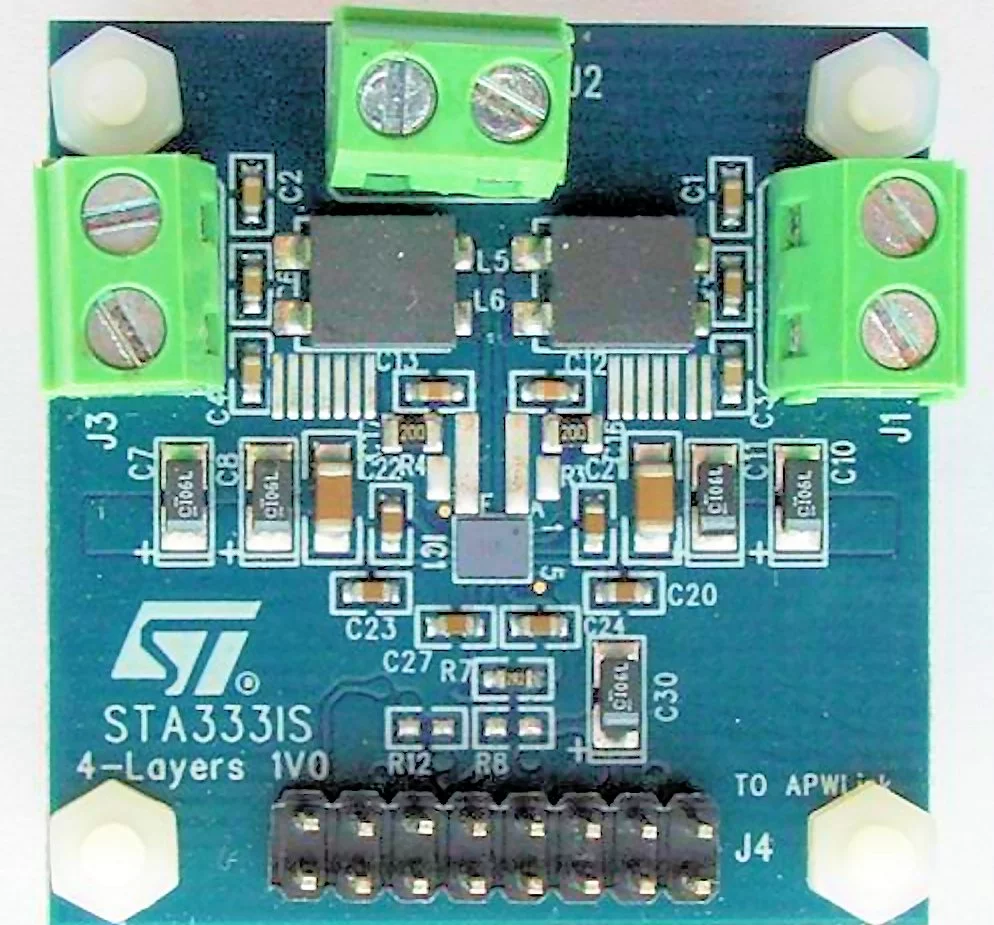If you can find one, the new STA333IS digital audio chip and power amplifier from STMicroelectronics (STM) offers a quick and easy solution for converting digital audio into a 10 watt/channel stereo for anything from a boom box to a backyard sound system. Don't misunderstand, they currently are at distributors, selling for about one US dollar apiece. The problem is literally finding the chips. At about one-eighth the volume of a grain of rice and weighing only a few milligrams, drop one on a carpet and its gone for good.
Industry-leading output power density of about 7 watts/cubic millimeter makes the STA333IS the smallest digital audio sound system in its class. It can accept any possible format of serial digital audio input, including the I2S standard. When restricted to 1-2 watts per channel, the system is arguably audiophile grade, with total harmonic distortion (THD) of about 0.05 percent, dynamic range of 100 dB, and crosstalk between channels reduced by 80 dB. Unfortunately, at ten watts/channel output, the THD spec is a full ten percent.
The audio signal is manipulated digitally, depending mainly on STM's proprietary fully flexible amplification (FFX) for digital audio processing. Two channels of FFX processing are provided, one for each stereo channel. In addition to the usual static and dynamic volume, balance, and spectral adjustments, the processing can also adjust the signal so as to counteract, for example, nonlinear response and/or distorted output resulting from the speaker design. This same principle allowed STM to include advanced modes for reducing AM radio interference.
Once the digital audio signal is fully massaged, it must be converted into an analog audio signal sufficiently powerful to drive a set of high-quality speakers. This conversion is carried out by pulse width modulation (PWM) techniques. As a result, the "'audio amplifier" that also performs digital to analog conversion is simply a set of MOSFET switches whose output is controlled by the digital audio signal. This not only results in simple circuitry, but also allows the STA333IS to operate at over 90 percent efficiency.


Little of the functionality provided by the STA333IS is terribly new. What is new is being able to integrate that functionality onto a single tiny chip. Only 14 small components and a power supply need be added to the 333IS to release that functionality on a digital audio signal – a remarkably small number. While other manufacturers are also moving in this direction, the introduction of the STA333IS provides STM with a tactical advantage in what is a massively dynamic marketplace.
Source: STMicroelectronics





